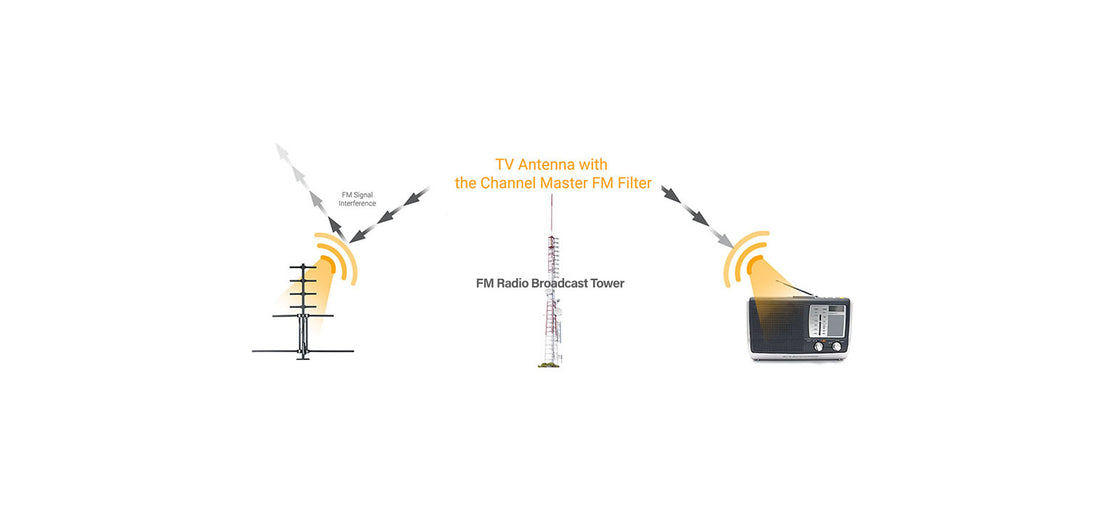Having issues with interference on your TV sets connected to an OTA antenna? Already installed that Channel Master LTE filter that everyone recommends, but still having problems? Frequent issues with pixelization and images freezing may be related to external RF signals getting into your OTA system. There are many sources of external RF signals, but one of the most frequent sources of this type of interference comes from your local FM radio stations.
To understand why FM radio stations can interfere with your TV, we need to talk about the frequency ranges of both TV signals and FM radio signals. TV channels are found in three specific frequency ranges, called VHF-LO (Channels 2 through 6 at 54 to 88 MHz), VHF-HI (Channels 7 through 13 at 174 to 216 MHz), and UHF (Channels 14 through 36 at 470 to 608 MHz, although many TVs will still tune up to UHF channel 83 at 890 MHz). The FM radio frequency range (88 MHz to 108 MHz) is just above channel 6 and a bit below channel 7.
The FM radio signals can be very strong, in fact, sometimes they are too strong for the TV receiver. Since the tuners in TV sets are designed to receive signals all the way from channel 2 to channel 36 at the top of the UHF band (54 MHz to 608 MHz), any and all signals in that range will be picked up by the OTA antenna and then into the TV tuner, including the FM signals. If the FM signals it picks up are too strong, it can cause interference on your TV set.
TV signals today are all digital. One of the unique properties of digital signals is that the TV set has the ability to do error correction, meaning that it can actually correct some amount of missing digital information, and recreate the picture as if there were no errors. It is built into all modern TV sets and it will help overcome some interference problems. But, if the interfering signal is too strong, it can cause more errors than the TV can correct. When this happens, you will start to see pixelation, audio dropouts, frozen images, or even lose the picture completely.
High level FM signals can cause interference on any channel you are trying to watch if the tuner is being overloaded. Using an FM filter can help correct this problem. An FM filter (or trap) is designed to attenuate the signals in the FM frequency band (88 to 108 MHz). As is frequently the case, there are various quality FM filters available on the market. To be effective, the FM filter needs a high amount of attenuation in the FM band, but have minimum impact on adjacent channels. Since channel 6 is immediately adjacent to the FM band, inexpensive filters can have a major impact on that channel. All FM filters will have some impact on channel 6, but the better ones will have minimal impact. Fortunately, there are very few TV broadcasters using channel 6 anymore, so this usually isn’t a concern. More important is the amount of attenuation the filter provides. It should have at least 40 dB of attenuation in the FM band to minimize the problem. Minimizing the impact on channel 6 while providing at least 40 dB of attenuation in the FM band is critical. Unfortunately, many inexpensive FM filters will totally block channel 6, possibly affect channel 5 as well, and not provide the necessary rejection of the FM signals. A high-quality filter is needed to achieve this level of performance.
The best place to install the FM filter is before any amplifiers in your OTA installation. Ideally, this means before the pre-amp at the antenna since strong FM signals can also cause amplifiers to start adding distortion into the signals. If this isn’t possible, then the filter should be installed before any other amplifiers or splitters in the home.
FM interference can be a real concern with any OTA installation, but by using a high-quality FM filter, and installing it in the correct location can be a great way to improve your TV signals throughout your home.

